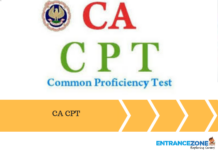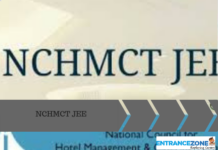NCERT Solutions for Class 12 Accountancy is available here for free to download in pdf format. Students can download the NCERT Solutions for Accountancy Class 12 Chapter 1 from the links provided in this article. Accountancy is a compulsory subject for Commerce stream students. This subject comprises the study of bookkeeping, record of cash inflow and outflow as well as various other significant theories required for business management. Therefore, students must study Accounts using the NCERT Solutions to get good marks in the exam. Accountancy Class 12 NCERT Solutions for each Chapter is provided in pdf format. Read the article to get the pdf links to download the NCERT Solutions for Class 12 Accountancy.
Admission Open 2023
- Top University & Colleges Official Links, Application & Scholarship Forms.
NCERT Solution for Class 12 Accountancy: Chapter-wise PDF
NCERT Class 12 Accountancy Solutions will help the students to understand the concepts easily. The solution is based on the latest CBSE syllabus. These answers are designed by the subject experts and teachers. So the NCERT class 12 Solutions are highly recommended for the students. NCERT Solutions for Class 12 Accountancy provides a wide range of concepts and advanced information regarding the subject, which includes all the questions provided in the NCERT books. Students must download the NCERT Solutions for class 12 Accountancy and practice for the exam.
NCERT Solution for Class 12 Accountancy Chapter 1 Accounting for Partnership: Basic Concepts
In NCERT Accountancy Chapter I students are taught about the basic concepts of Accounting for Partnership. A partnership is an agreement between two or more persons who have agreed to share profits or losses of a business that will be carried by all or any one of them acting for all. A person who joined their hands to set up the business are called ‘partners individually and ‘firm’ collectively and the name under which they carry out their business is termed as ‘firm name’. These concepts are elaborately discussed in Chapter 1.
Subscribe to Get Updated Information about NCERT Solutions for Class 12 Accountancy: Download PDF Here - Admissions
NCERT Solution for Class 12 Accountancy Chapter 2 Accounting for Not for Profit Organisation
Chapter 2 of NCERT Accountancy is about the NPO. Organizations that are established with the aim of providing services to society and not profit earning are called Not-for-profit Organisations (NPO). Some organizations that come under NPO are hospitals, religious organizations, and trade unions. An NPO earns income from life membership fees, subscriptions, grants, donations, etc. Students are also taught about the receipts and payments account (R & P Account) is a summary of actual cash receipts and payments that are extracted from the cash book over a certain time period.
NCERT Solution for Class 12 Accountancy Chapter 3 Reconstitution of a Partnership Firm – Admission of a Partner
In Chapter 3 NCERT students are taught about the basic concepts of the effect of admission of a partner on change in the profit-sharing ratio, treatment of goodwill, treatment for revaluation of assets and reassessment of liabilities, treatment of reserves, and accumulated profits, adjustment of capital accounts and preparation of balance sheet. So, the students can download the NCERT Solutions for Class 12 Accountancy Chapter 3 from the pdf link provided here.
NCERT Solutions Class 12 Accountancy Chapter 4 Reconstitution of a Partnership Firm – Retirement/Death of a Partner
NCERT Chapter 4 is about the rules about partnership. At the time of retirement or death of a partner, it becomes inevitable to revalue the assets and liabilities of the firm for ascertaining their true and fair values. The revaluation is necessary as the value of assets and liabilities may increase or decrease with the passage of time. This Chapter also discusses the effect of retirement/death of a partner on change in profit sharing ratio, treatment of goodwill, treatment for revaluation of assets and reassessment of liabilities, adjustment of accumulated profits and reserves, adjustment of capital accounts, and preparation of balance sheet. Preparation of loan account of the retiring partner.Calculation of deceased partner’s share of profit till the date of death. Preparation of deceased partner’s capital account, executor’s account, and preparation of balance sheet.
NCERT Solutions for Class 12 Accountancy Chapter 5 Dissolution of Partnership Firm
In Chapter 5 of NCERT Accountancy students are taught about the Dissolution of Partnership Dissolution of a partnership firm: types of dissolution of a firm. Settlement of accounts -preparation of realization account, and other related accounts: capital accounts of partners and cash/bank a/c (excluding piecemeal distribution, sale to a company, and insolvency of partner(s).
NCERT Solutions for Class 12 Accountancy Chapter 6 Accounting for Share Capital
NCERT Accountancy Chapter 6 is about the Accounting for share Capital Share and share capital: nature and types. Accounting for share capital: issue and allotment of equity shares, private placement of shares, Employee Stock Option Plan (ESOP). Public subscription of shares – over subscription and under subscription of shares; issue at par and at a premium, call in advance and arrears (excluding interest), issue of shares for consideration other than cash. Accounting treatment of forfeiture and re-issue of shares. Disclosure of share capital in the company’s Balance Sheet.
NCERT Solutions for Class 12 Accountancy Chapter 7 Issue and Redemption of Debentures
In NCERT Chapter 7 topics that are discussed are about the Issue of debentures at par, at a premium, and at a discount. Issue of debentures for consideration other than cash; Issue of debentures with terms of redemption; debentures as collateral security-concept, interest on debentures. Redemption of debentures: Lump sum, the draw of lots, and purchase in the open market (excluding ex-interest and cum-interest). Creation of Debenture Redemption Reserve.
NCERT Solutions for Class 12 Accountancy Chapter 8 Financial Statements of a Company
In NCERT Chapter 8 students are taught about the Financial Statements of a Company: Statement of Profit and Loss and Balance Sheet in the prescribed form with major headings and subheadings (as per Schedule III to the Companies Act, 2013). Financial Statement Analysis: Objectives, importance, and limitations. Financial statements are the end products of an accounting process, it provides a true picture of the performance of the company over a time period and such a statement is used by different users of accounting information. These statements are prepared annually. Apart from these concepts, this Chapter also discusses the objectives of Financial Statements.
NCERT Solutions for Class 12 Accountancy Chapter 9 Analysis of Financial Statements
Chapter 9 NCERT Accountancy is about the importance of Financial Statements. Financial analysis is of great importance for the various users of accounting information. Financial statements such as Balance Sheets, Income sheets, and other sources of financial data provide ample information on the various expenses and sources of profit, loss, and income which is helpful in determining the financial status of a business. Financial data is not making any meaningful contribution until it is analyzed. There are various methods that help in analyzing financial statements and make them useful for various accounting users.
NCERT Solutions for Class 12 Accountancy Chapter 10 Accounting Ratios
Chapter 10 is about the description and types of Accounting ratios. It is a quantitative analysis of data present in a financial statement. It shows the relationship between items present in the Balance sheet and the Income Statement. It helps in calculating operational efficiency, solvency, and determining the profitability of a firm. The ratio is a statistical measure that helps in comparing the relationship between two or more figures. The latter half of the Chapter is about the classification of the Ratios.
NCERT Solution for Class 12 Accountancy Chapter 11 Cash Flow Statement
The final Chapter of NCERT Accountancy is about the Cash Flow Statement Meaning, objectives, and preparation. A financial statement that represents the inflow and outflow of cash and cash equivalents of a company is called a cash flow statement. Cash Flow Statement Scope: (i) Adjustments relating to depreciation and amortization, profit or loss on sale of assets including investments, dividend (both final and interim), and tax. (ii) Bank overdraft and cash credit to be treated as short-term borrowings. (iii) Current Investments to be taken as Marketable securities unless otherwise specified.
NCERT Solution for Class 12 Accountancy- All Chapters PDF
NCERT Accountancy Class 12 Solutions are given below for all Chapters. Students can click on the link of the respective Chapter number to download Class 12 Accountancy NCERT Chapter-wise Solutions.
| Name of the Chapter | PDF Link |
|
NCERT Solutions for class 12 Accountancy Chapter 1- Accounting for Partnership: Basic Concepts
|
Download PDF |
|
NCERT Solution for class 12 Accountancy Chapter 2- Accounting for Nonprofit Organization
|
Download PDF |
|
NCERT Solution for class 12 Accountancy Chapter 3- Reconstitution of a Partnership Firm- Admission of a Partner
|
Download PDF |
|
NCERT Solution for class 12 Accountancy Chapter 4- Reconstitution of a Partnership Firm- Retirement/Death of a Partner
|
Download PDF |
|
NCERT Solution for class 12 Accountancy Chapter 5- The Dissolution of a Partnership Firm
|
Download PDF |
|
NCERT Solution for class 12 Accountancy Chapter 1- Accounting for Share Capital
|
Download PDF |
|
NCERT Solution for class 12 Accountancy Chapter 2- Issues and Redemption of Debentures
|
Download PDF |
|
NCERT Solution for 12th Accountancy Chapter 3- Financial Statements of a Company
|
Download PDF |
|
NCERT Solution for class 12 Accountancy Chapter 4- Analysis of Financial Statements
|
Download PDF |
|
NCERT Solution class 12 Accountancy Chapter 5- Accounting Ratios
|
Download PDF |
|
NCERT Solution class 12 Accountancy Chapter 6- Cash Flow Statements
|
Download PDF |



















